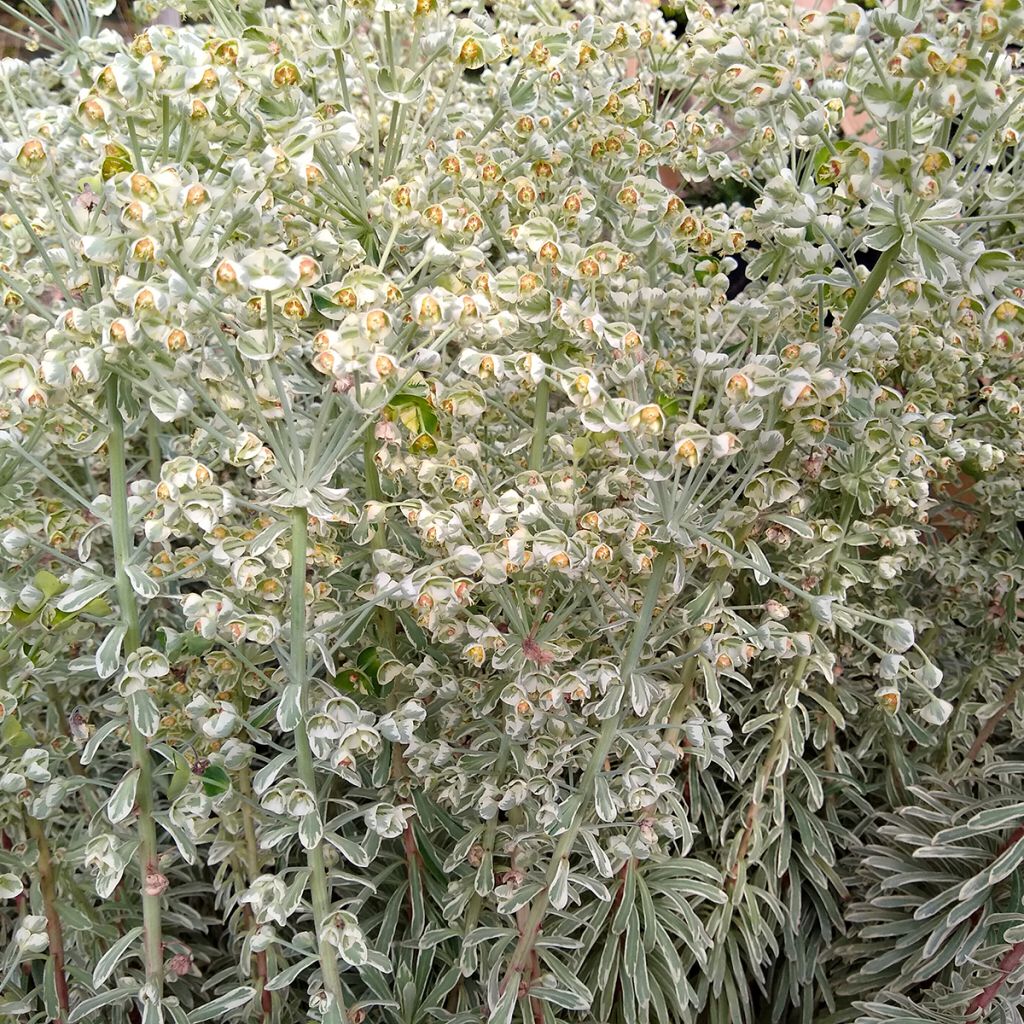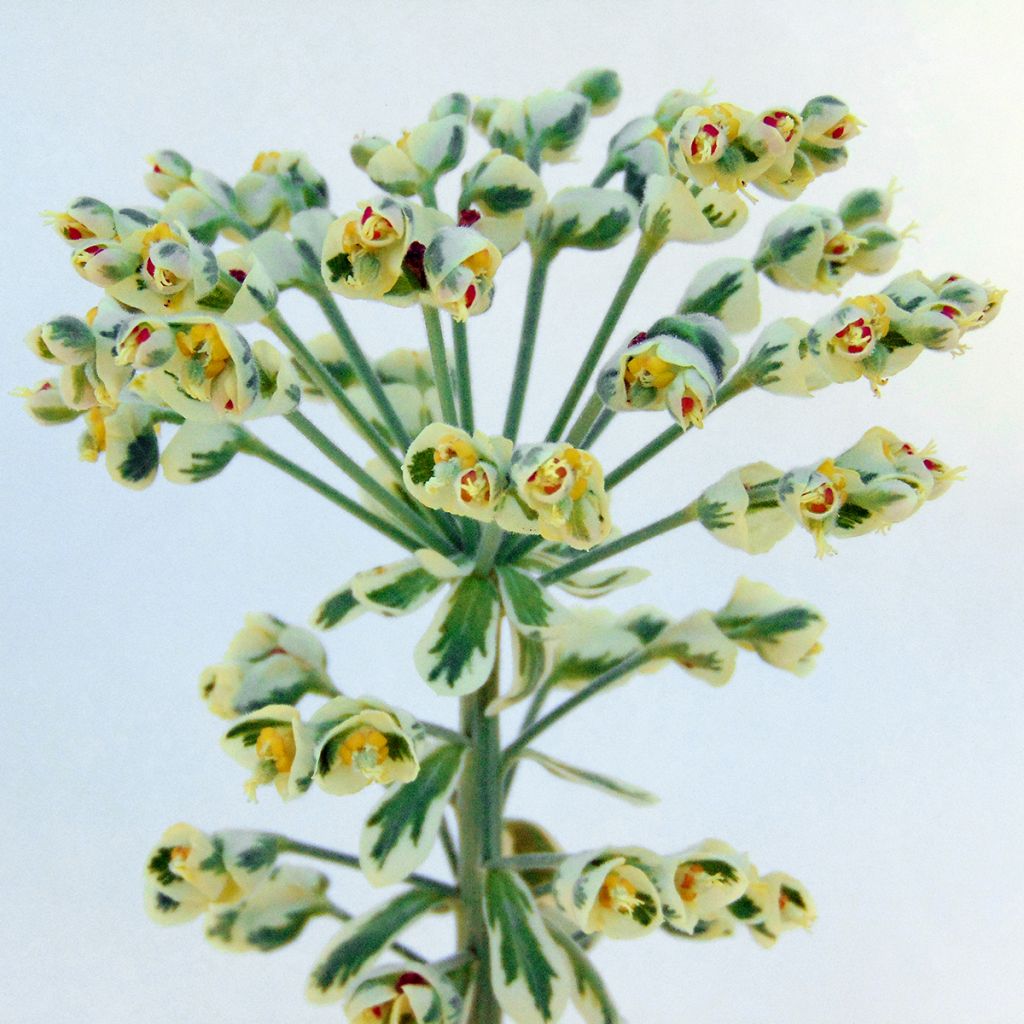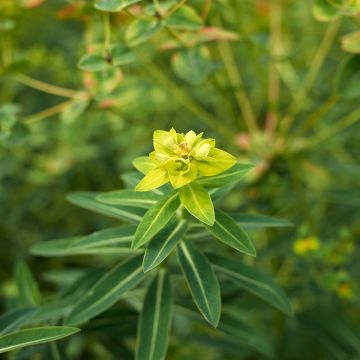

Euphorbia characias Wilcott - Spurge


Euphorbia characias Wilcott - Spurge


Euphorbia characias Wilcott - Spurge


Euphorbia characias Wilcott - Spurge
Euphorbia characias Wilcott - Spurge
Euphorbia characias Wilcott
Mediterranean Spurge, Evergreen Spurge
Hello, The pendulous euphorbias that I have just received have arrived a bit sad, especially one of them. (attached photos) I have watered them for 24 hours without much success. Should I cut the irreparably withered stems? Thank you for your advice. Regards,
Anne, 07/04/2022
Special offer!
Receive a €20 voucher for any order over €90 (excluding delivery costs, credit notes, and plastic-free options)!
1- Add your favorite plants to your cart.
2- Once you have reached €90, confirm your order (you can even choose the delivery date!).
3- As soon as your order is shipped, you will receive an email containing your voucher code, valid for 3 months (90 days).
Your voucher is unique and can only be used once, for any order with a minimum value of €20, excluding delivery costs.
Can be combined with other current offers, non-divisible and non-refundable.
Why not try an alternative variety in stock?
View all →This plant carries a 12 months recovery warranty
More information
We guarantee the quality of our plants for a full growing cycle, and will replace at our expense any plant that fails to recover under normal climatic and planting conditions.

Would this plant suit my garden?
Set up your Plantfit profile →
Description
The Euphorbia characias 'Wilcott' (Silver Swan) is a compact and particularly graphic form of the Euphorbia, a plant with very ornamental foliage, with a silver appearance, valuable for animating a dry garden, essential by the seaside. Its long evergreen leaves, strongly marginated with cream on a slightly glaucous gray-green background, cover stems that start like a bouquet from the base of this rounded plant. Echoing the foliage, large acid green inflorescences appear in spring, variegated with cream, and curiously adorned with reddish-brown nectar glands. This perennial is perfectly adapted to arid conditions and is a plant of structure and accent for low borders. It will enhance all the plants that accompany it, as well as the humblest of rockeries.
Euphorbia characias 'Wilcott' belongs to the large family of euphorbiaceae. It is a variegated foliage horticultural cultivar, discovered in England, more vigorous than the usual variegated cultivars. This variety comes from the Euphorbia characias subsp. characias, native to the western Mediterranean basin (From Portugal to Crete). It is a perennial plant that forms a true undershrub with numerous stems, which will reach about 50 cm (20in) in height and 60 to 70 cm (24 to 28in) in diameter, with fairly rapid growth. Each stem is biennial. In the first year, it produces leaves, and in the second year, it produces a terminal inflorescence. From the month of February, in mild climates, large cylindrical inflorescences appear, the tip of which unfurls into a crozier, to bloom from May to June. Each 'flower', without petals, is composed of leaves and bracts, forming a cyathium of acid green color marginated with cream, in the center of which are the brightly colored reddish-brown nectar glands, which attract pollinating insects. The stems and leaves contain a milky sap that is sticky and toxic. This camel plant can live for more than 20 years and self-seeds spontaneously in loose soil, not always true to the parent plant. This variety sometimes has difficulty flowering if there is insufficient sunlight.
With about 8000 species, the genus Euphorbia is one of the richest on the planet. Few of them can acclimate in the garden, but rest assured, there is something to satisfy both the most demanding collector and the amateur who wants to garden without worries with perennial and hardy euphorbias for shade or sun, cool or hot, dry or wet. You just have to choose well. The Euphorbia characias 'Wilcott' is a plant of the scrubland with an exotic appearance that can be planted in a large rockery, on a dry slope or in a very well-drained border with plants that have the same requirements: lavenders, rosemarys, cistuses, asphodels, teucriums or Goniolimon speciosum. The acid green of its flowers goes well with all blue blooms: perennial flax, rosemary Sappho, Globularia alypum, or with the purple foliage of Pennisetum Purple majesty, P. Vertigo, and tall sedums like Black Jak or Chocolate.
Report an error about the product description
Euphorbia characias Wilcott - Spurge in pictures






Flowering
Foliage
Plant habit
Safety measures
Botanical data
Euphorbia
characias
Wilcott
Euphorbiaceae
Mediterranean Spurge, Evergreen Spurge
Cultivar or hybrid
atteintescutaneomuqueuses
Cette plante peut provoquer l'apparition de réactions cutanées indésirables, une atteinte des yeux, ou des difficultés respiratoires si elle est ingérée.
Ne la plantez pas là où de jeunes enfants peuvent évoluer. Evitez tout contact avec la peau: privilégiez l'emploi de gants pour la manipuler. En cas de contact, lavez-vous soigneusement les mains et rincez abondamment à l'eau la zone concernée. Lavez les vêtements entrés en contact. En cas de réaction cutanée, contactez votre médecin ou le centre antipoison le plus proche de chez vous. En cas d'atteinte étendue ou de difficultés respiratoires, appelez immédiatement le 15 ou le 112.Pensez à conserver l'étiquette de la plante, à la photographier ou à noter son nom, afin de faciliter le travail des professionnels de santé.
Davantage d'informations sur https://plantes-risque.info
Other Euphorbia - Spurge
View all →Planting and care
The Euphorbia characias 'Wilcott' should be planted early in the spring in a cool climate, preferably in September-October in a hot and dry climate. Choose a very sunny location. The soil must be perfectly drained, rocky or sandy, even limestone and poor. Incorporate draining materials into the soil of your garden if necessary, and elevate the plant. It fears the combination of humidity and winter cold, and is hardy up to -12°C (10.4°F) in very well-drained soil. To keep the plant looking aesthetically pleasing, it is advisable to remove the stems that have flowered: indeed, each stem lives for only two years, growing the first year, flowering the second, and then disappearing in favor of new shoots. It is essential to protect your hands from the latex as it causes skin inflammations. Pruning is necessary to avoid the plant becoming unsightly, or if you wish to prevent seed formation.
Planting period
Intended location
Care
-
, onOrder confirmed
Reply from on Promesse de fleurs
Similar products
Haven't found what you were looking for?
Hardiness is the lowest winter temperature a plant can endure without suffering serious damage or even dying. However, hardiness is affected by location (a sheltered area, such as a patio), protection (winter cover) and soil type (hardiness is improved by well-drained soil).

Photo Sharing Terms & Conditions
In order to encourage gardeners to interact and share their experiences, Promesse de fleurs offers various media enabling content to be uploaded onto its Site - in particular via the ‘Photo sharing’ module.
The User agrees to refrain from:
- Posting any content that is illegal, prejudicial, insulting, racist, inciteful to hatred, revisionist, contrary to public decency, that infringes on privacy or on the privacy rights of third parties, in particular the publicity rights of persons and goods, intellectual property rights, or the right to privacy.
- Submitting content on behalf of a third party;
- Impersonate the identity of a third party and/or publish any personal information about a third party;
In general, the User undertakes to refrain from any unethical behaviour.
All Content (in particular text, comments, files, images, photos, videos, creative works, etc.), which may be subject to property or intellectual property rights, image or other private rights, shall remain the property of the User, subject to the limited rights granted by the terms of the licence granted by Promesse de fleurs as stated below. Users are at liberty to publish or not to publish such Content on the Site, notably via the ‘Photo Sharing’ facility, and accept that this Content shall be made public and freely accessible, notably on the Internet.
Users further acknowledge, undertake to have ,and guarantee that they hold all necessary rights and permissions to publish such material on the Site, in particular with regard to the legislation in force pertaining to any privacy, property, intellectual property, image, or contractual rights, or rights of any other nature. By publishing such Content on the Site, Users acknowledge accepting full liability as publishers of the Content within the meaning of the law, and grant Promesse de fleurs, free of charge, an inclusive, worldwide licence for the said Content for the entire duration of its publication, including all reproduction, representation, up/downloading, displaying, performing, transmission, and storage rights.
Users also grant permission for their name to be linked to the Content and accept that this link may not always be made available.
By engaging in posting material, Users consent to their Content becoming automatically accessible on the Internet, in particular on other sites and/or blogs and/or web pages of the Promesse de fleurs site, including in particular social pages and the Promesse de fleurs catalogue.
Users may secure the removal of entrusted content free of charge by issuing a simple request via our contact form.
The flowering period indicated on our website applies to countries and regions located in USDA zone 8 (France, the United Kingdom, Ireland, the Netherlands, etc.)
It will vary according to where you live:
- In zones 9 to 10 (Italy, Spain, Greece, etc.), flowering will occur about 2 to 4 weeks earlier.
- In zones 6 to 7 (Germany, Poland, Slovenia, and lower mountainous regions), flowering will be delayed by 2 to 3 weeks.
- In zone 5 (Central Europe, Scandinavia), blooming will be delayed by 3 to 5 weeks.
In temperate climates, pruning of spring-flowering shrubs (forsythia, spireas, etc.) should be done just after flowering.
Pruning of summer-flowering shrubs (Indian Lilac, Perovskia, etc.) can be done in winter or spring.
In cold regions as well as with frost-sensitive plants, avoid pruning too early when severe frosts may still occur.
The planting period indicated on our website applies to countries and regions located in USDA zone 8 (France, United Kingdom, Ireland, Netherlands).
It will vary according to where you live:
- In Mediterranean zones (Marseille, Madrid, Milan, etc.), autumn and winter are the best planting periods.
- In continental zones (Strasbourg, Munich, Vienna, etc.), delay planting by 2 to 3 weeks in spring and bring it forward by 2 to 4 weeks in autumn.
- In mountainous regions (the Alps, Pyrenees, Carpathians, etc.), it is best to plant in late spring (May-June) or late summer (August-September).
The harvesting period indicated on our website applies to countries and regions in USDA zone 8 (France, England, Ireland, the Netherlands).
In colder areas (Scandinavia, Poland, Austria...) fruit and vegetable harvests are likely to be delayed by 3-4 weeks.
In warmer areas (Italy, Spain, Greece, etc.), harvesting will probably take place earlier, depending on weather conditions.
The sowing periods indicated on our website apply to countries and regions within USDA Zone 8 (France, UK, Ireland, Netherlands).
In colder areas (Scandinavia, Poland, Austria...), delay any outdoor sowing by 3-4 weeks, or sow under glass.
In warmer climes (Italy, Spain, Greece, etc.), bring outdoor sowing forward by a few weeks.























































